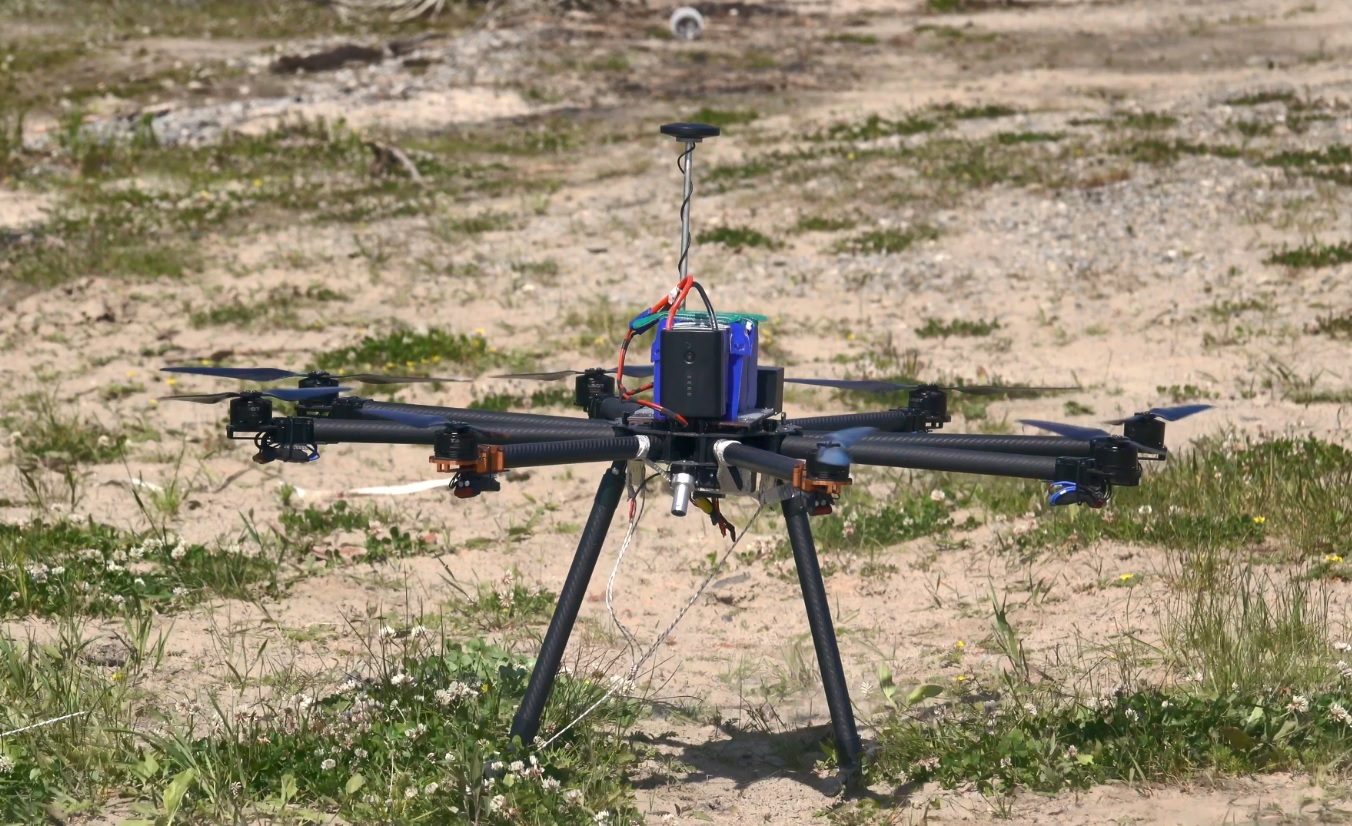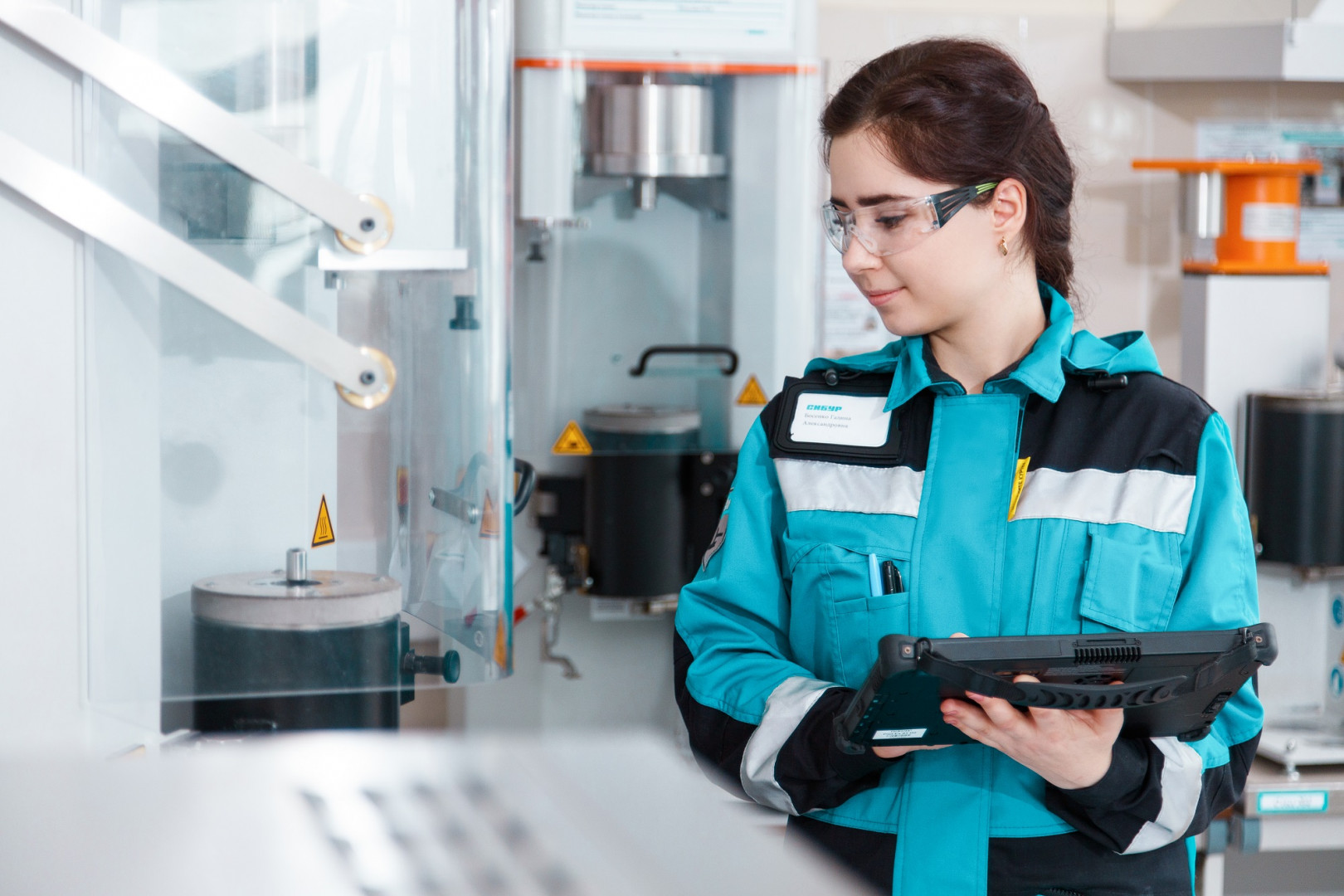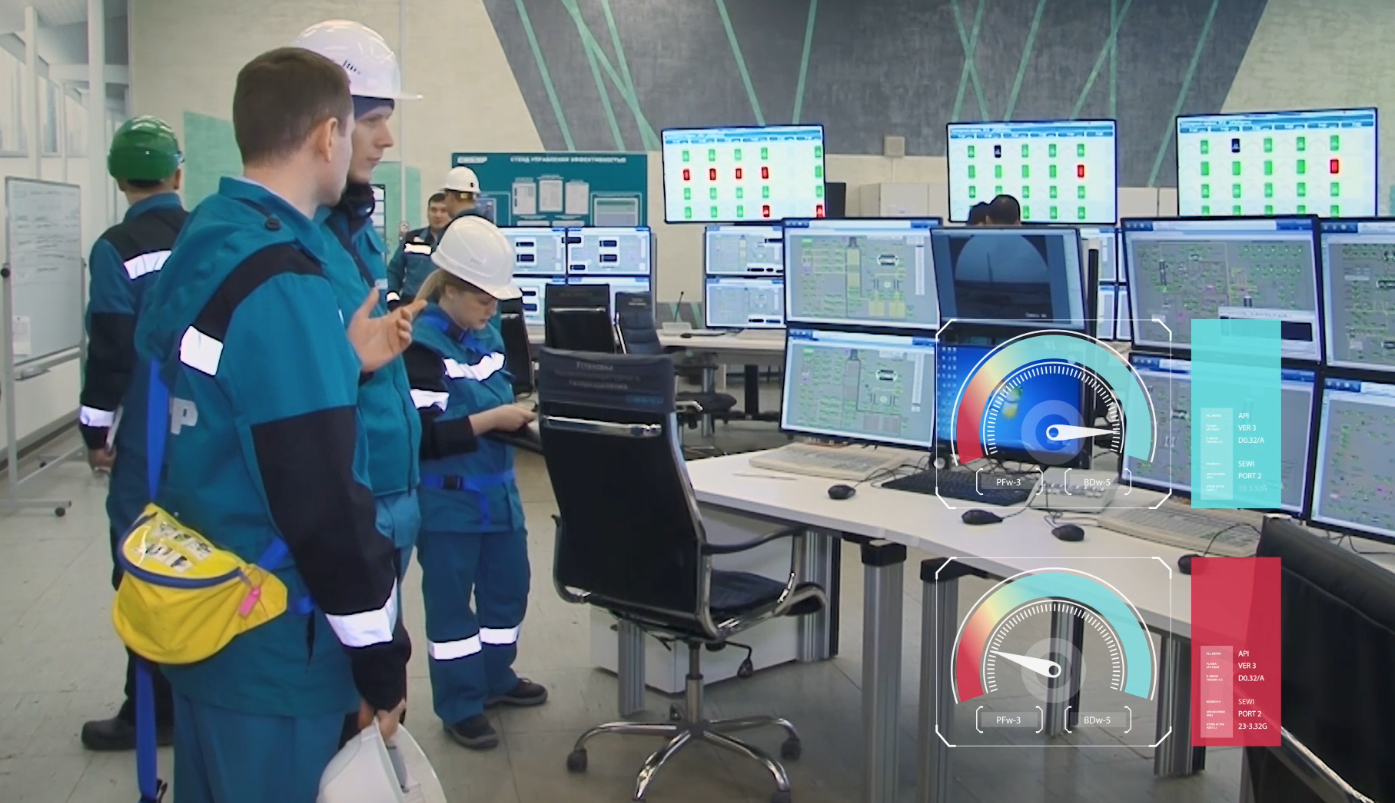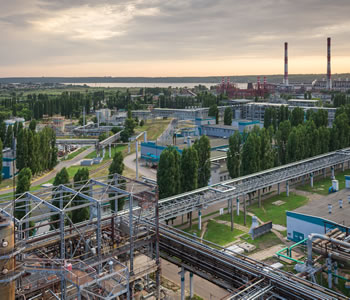According to data from the Russian Ministry of Digital Development, Communications and Mass Media, 80% of companies realise the need for digitalisation; however, at the moment only 35% have embarked on a digitalisation journey.And SIBUR, who announced a plan for digital transformation back in 2017, is amongst them. To the moment this transformation has already impacted many of its processes. What solutions help the Company to increase productivity, create smart products and improve business models?
“In the petrochemical industry, the combination of economic impact with a long-term competitive edge comes from taking decisions based on data from both production and business processes,” SIBUR’s Director for Digital and Information Technologies, Alisa Melnikova, noted in a special issue of Chemical Week IHS Markit dedicated to SIBUR. In her opinion, through using tools that help make sound decisions based on analytics, the Company is fostering a data-driven culture (i.e. data-driven management). Advanced analytics, as well as machine learning, the Internet of Things, and sales optimisation are all part of projects with the Digital SIBUR vision.
An unmanned aerial vehicle (UAV) conducting environmental monitoring in Tobolsk.
The need to use drones for environmental monitoring became even more urgent. Drones were already being used for monitoring operations, but now they are also used in environmental protection, and the sampling of water and air
Optimising approaches
In the spring of 2020, due to the start of coronavirus restrictions, the need to use drones for environmental monitoring became even more urgent at SIBUR enterprises in Tobolsk. Drones were already being used for monitoring operations, but now they are also used in environmental protection, and the sampling of water and air. In remote locations, it is logical for such tasks to be performed with the help of machines, but technology can also be used to replace inspectors performing walkaround inspections of equipment. A line inspector must know the technology like the back of his hand and be able to recognise problems in time, using their knowledge, experience and intuition. The price of making a mistake is high: in the best case there will be product defects, and in the worst case someone can get hurt. Remote monitoring with the help of the Internet of Things (IoT) devices helps to keep the impact of human error to a minimum and reduce accidents. Technological components are equipped with wireless sensors that transmit all production parameters (temperature, pressure, etc.) to control panels and can quickly detect any deviations.
Another method of improving equipment maintenance is through having a mobile-first solution for walkaround inspections. At one point, this procedure was only done by people: the staff monitored readings on devices, identified faults, recorded them on paper, and then compiled documents for repair teams. Results of an inspection can now be entered into an application on an explosion proof smartphone, and sent to an operator. The employee simply uses a smartphone to scan special NFC tags, then receives a description of the equipment and relevant specifications, and records information about the defects they have detected. The result is not only a more accurate diagnostic, but more data, necessary for subsequent analysis, can be collected.
Another work process which has long needed to be digitised, is the issuance of work permits that are required for repair work, work at height, and other high-risk activities. This document was previously issued in physical, paper form, and the approval procedure could take several days. Everything can now be prepared using an online form. This saves a significant amount of time, since all information related to the tasks, from the venue to safety measures, is entered on a database and approved in advance. Immediately before performing the planned task, the engineer would just select the necessary fields on the smartphone, generate a work permit for the crew and have it approved using an electronic signature, also through the app.
The results of a mobile inspection being recorded on a smartphone and sent to an operator.
Predictive maintenance can identify and eliminate faults through data analysis, predict possible failures in the technology, track any deterioration in product quality or excessive waste of resources, and make recommendations to operators
Preventing a failure
To paraphrase a well-known saying, “the best repair is one that was avoided”. This is the goal of predictive maintenance, which is based on troubleshooting equipment and monitoring of its condition. Maintenance of this sort can identify and eliminate faults through data analysis, predict possible failures in the technology, track any deterioration in product quality or excessive waste of resources, and make recommendations to operators. This can be achieved by using advanced analytical tools, as well as modelling of physical and chemical processes. With the help of this type of maintenance, it is also possible to create new technological production flows, select optimal operating mode and feedstock composition, estimate economic impact, and even build new facilities using digital twins to visualise projects in advance.
The use of video analytics systems, which include video cameras and specialised software, is aimed at improving the quality of products, monitoring equipment, and ensuring compliance with safety rules. Video analytics algorithms developed by SIBUR Digital specialists allow the “black screen” signalling concept to be used at SIBUR facilities. The cameras monitor the technological process and if a variance is found in the data, then an image will be displayed on the operator’s screen. Thus, if everything is in order, the screen will stay “black” and will not distract the operator.
Predictive maintenance based on troubleshooting equipment and monitoring of its condition.
The Dynamic Pricing tool provides a price forecast using advanced analytics tools and by analysing a variety of factors: prices for raw materials and products, supply and demand, and possible equipment shutdowns and accidents. The forecasting speed is measured in minutes, with its accuracy doubled
Only the right solutions
The Econs decision support system uses mathematical modelling to understand how process parameters in production affect the economic efficiency of the entire business. Completing such a task in real time is impossible for a human operator, since production is affected by hundreds of different process parameters. The computer system visualises the economic performance of the current operating mode and helps the operator to make production process more efficient in terms of profitability.
The task of Real Time Optimisation is to maximise total operating profit. This is calculated by taking into account all costs, sales revenue, and process constraints. The system is used, for example, in pyrolysis of petroleum hydrocarbons, and in compressed air production and pyrolysis gas cracking. Depending on the cost of inputs entered, the optimisation system determines which pyrolysis mode to use to enable greater process selectivity for the most valuable products.
However, manufacturing a product is only half of the battle: it must then be sent to a profitable market in a timely manner, which requires accurate forecasting. The Dynamic Pricing tool provides a price forecast using advanced analytics tools and by analysing a variety of factors: prices for raw materials and products, supply and demand, and possible equipment shutdowns and accidents. The forecasting speed is measured in minutes, with its accuracy doubled.
The decision support system visualises the economic performance of the current operating mode and helps the operator to make production process more efficient.
Digital customer support
SIBUR’s project which analyses customer production data for free is unique in the Russian petrochemical industry. This initiative helps to increase efficiency and boost sales by minimising production incidents caused by equipment problems, technology breaches, etc. SIBUR offers this advanced analytics tools that small businesses cannot afford but would use to avoid such issues. By modelling the production chain based on customer data, specialists can find issues and provide recommendations on how to fix them.
Alexey Vinnichenko, head of the SIBUR Digital Analytics Centre, said in an interview with ComputerWorld that analysing customer data sometimes requires solving peculiar challenges. “We do a slightly modified Scrum and immediately stand up a team comprised of all the necessary customer representatives, including from business. The team also includes a data scientists, scrum master, and product owner. This firstly allows you to bypass the stage with everyone writing statements of work for each other, which almost certainly get misunderstood, and secondly, it means it is possible to work in short iterations and quickly receive feedback. The fail fast principle allows you to avoid sunk costs and to quickly reject hypotheses that are false. The customer’s participation in the team improves engagement and reduces communication costs,” explains Vinnichenko. “Also, by the time a project concludes, our analysts will have a solid grasp of production processes on a par with process engineers, despite having a lack of experience and specialist training. Data analysis enables highly granular views into processes, and close interactions with business allows questions that arise during the process to be answered.”
Speaking about the further development of the project, Alexey Vinnichenko says that the current direction is towards diversifying the customer base: “Next year will probably be dedicated to this. We started with plastic film producers, and as soon as the restrictions are lifted, we will start targeting pipe and tyre manufactures. Having gathered a wealth of statistics and best practices, we will be able to think about creating path for fast-track development." The next stage will be implementing service delivery. “A recommendation engine will run on SIBUR’s infrastructure, while a client will be just granted access to it to see in real time their dashboard with their own metrics and recommendations. This service can very well be ‘wrapped up’ into a new-generation digital product,” concludes Vinnichenko.
SIBUR offers its clients in-depth analysis and possible solutions to problems.
Overcoming barriers
However, despite its inevitability, the industry is still resisting digitalisation. The reason is that conservative industries find it difficult to embrace change, which implies not so much a change in technology but rather a mindset shift.
In 2020, the Digital Economy non-profit, Zyfra Group, and the Russian Ministry of Industry and Trade conducted a survey to identify obstacles to the digitalisation of Russia’s manufacturing industry. According to Pavel Khristenko, Director for Industrial Areas at Digital Economy, the pandemic has revealed the “digital immaturity of companies”. Despite the increased demand for digital tools, the main obstacles to their implementation, in addition to the cost, remain the low existing level of automation and employees’ distrust of technology. In order to push through and accelerate digitalisation, businesses need a comprehensive programme based on a clear visibility into production and financial metrics that can be achieved through digitalisation. Many large businesses still lack this strategy. In addition, according to the survey, industrial businesses embarking on a digitalisation journey need to modernise production and secure an improve legislative framework.
“At SIBUR, digital transformation is taking place simultaneously with a radical optimisation of the company’s end-to-end business processes related to operations and maintenance, sales, supply chain and logistics management, as well as the organisation of internal work processes of employees,” says Alisa Melnikova. “Success of a digital transformation programme is determined by the organisation’s readiness for large-scale change and the speed of this change.”
To create a fully-functional digital ecosystem, you need to have not only an appropriate regulatory framework, but also industry standards. These are important for ensuring the engineering compatibility of digital solutions, simplifying the design process and developing a variety of systems. According to Denis Manturov, Minister of Trade and Industry of the Russian Federation, “standardisation, which the success of digital transformation directly depends on, would bring increases of up to 1% per year to the country’s GDP and about 3% to the growth in exports.” The first set of standards for the digital industry were developed by the Russian Venture Company’s technical committee on cyber-physical systems and approved in early August 2020, and the second set of standards in early February, just a few months later. At the moment, other national industry standards are being discussed, for example in the smart manufacturing sector.

The operation of a future project can be visualised in advance through a digital twin.
To create a fully-functional digital ecosystem, you need to have not only an appropriate regulatory framework, but also industry standards. These are important for ensuring the engineering compatibility of digital solutions, simplifying the design process and developing a variety of systems
A new reality
According to Alexander Kurdin, Head of Research at the Autonomous Non-Profit Organisation (ANO) Fuel and Energy Department of the Analytical Centre for the Government of the Russian Federation, it is still too early to talk about a full-fledged digital transformation in the oil and gas industry, but this process will take place step by step.
According to global forecasts, the introduction of digital automation will bring the global oil and gas sector USD 220 billion in net benefits over 2016–2025, analytics and modelling of operating processes will bring USD 425 billion, and digitisation of the workforce will bring USD 100 billion. At the same time, a digitalisation transformation of the oil and gas industry will also create new, specific risks. It will be difficult for individual companies to anticipate such risks alone, without creating large-scale platforms.
At the start of September 2020, the Union of Domestic Commodity Producers announced the establishing of INCON, a platform to drive the digitalisation of manufacturing industry in Russia. It will combine management of employee knowledge, technical information, and production quality, as well as logistical support functions into a single information environment. The point of the innovation is to create a database of encoded data modules, which, with the help of special programmes, can automatically configure IT products (interactive process sheets with dynamic scenarios, digital twins of operations, etc.). According to estimates of the Union of Domestic Producers, the introduction of the platform in the industrial sector can give an annual increase of 3.7% to the sectors’ GDP contribution.
Improvement of raw material extraction technologies
One example of these solutions is SIMULIA DigitalROCK. It is a virtual laboratory that can quickly (in a few days, rather than in months as in traditional physical studies) and through using the smallest samples, analyse and classify rocks, predict reservoir permeability and other data that are essential for oil field development and production optimisation.
These industry-specific solutions increase flexibility in terms of production and operational predictability, help assess risks and save resources, accelerate decision-making, and develop optimal production settings. British Petroleum is one of the laboratory’s partners.
According to global forecasts, the introduction of digital automation will bring the global oil and gas sector USD 220 billion in net benefits over 2016–2025, analytics and modelling of operating processes will bring USD 425 billion, and digitisation of the workforce will bring USD 100 billion
The digital transformation of business is inseparable from the transformation of the labour market. According to data from the platform Professionals 4.0, in 2050, 83% of the global workforce will be employed within the gig economy. This refers to the relationship between an employer and independent workforce that is dominated by freelance engagements or short-term contracts. The gig economy will also be driven by platforms, which simplify the search for talent and employers. An example of such a platform in Russia is Professionals 4.0, through which SIBUR, Gazprom Neft, Skolkovo and dozens of other corporations, as well as government authorities and private businesses implement their projects. There are more that 20 thousand professionals on the platform, ranging in fields of expertise. For example, experts in economics, finance, project management, marketing, IT, robotics, etc.
A digital approach is also important when handling data. Whoever owns information, as is widely known, owns the world, but today it is associated with a significant amount of person-hours. What data needs to be collected, how should it be structured, how can it later be used so that the information does not turn into a useless resource? These questions can be solved by intelligent systems that mine for information within a company, process it, and then make it available for employees. An example of such a system is Naumen Enterprise Search, a product of the Russian IT company NAUMEN. The technology allows you to create a shared information space within the company, digitise knowledge, monitor new technologies and external incidents, quickly find relevant content, and even prepare reports and meetings more effectively. This saves time when searching for information, accelerates decision-making, and encourages the accumulation and sharing of knowledge within the company
Digital transactions
Other examples of projects that facilitate company interactions in the industry are linked to the organisation and execution of transactions. For example, in autumn 2020, the digital platform ISOURCE entered the market. The platform combines the technology stack and infrastructure of the transport logistics operator Gazpromneft-Snabzhenie and its partners. This digital ecosystem includes purchasing, banking, and logistics services that allow customers and contractors to track the progress of their projects and agreements.
Chemexsol is an online platform for transactions in chemical solutions for the oil and gas industry, allowing customers sourcing chemicals to directly contact raw material suppliers, production sites and developers. You can choose a reagent online, place an order for its production and delivery, then track the order status, receive appropriate documents, and send any claims, etc. The company already has partners in Russia, Impeksneftekhim (an independent petrochemical trader that supplies hydrocarbons, and refined petroleum, chemical and petrochemical products) and Mirrico Group (production and supply of chemical reagents for various purposes, engineering support for customers requesting advice on the use of chemical solutions, and maintenance services). Up until now, more than 2,500 different transactions have been closed on the Chemexsol platform.
The experience of SIBUR and other Russian industry players shows how digitalisation can improve the operational efficiency of companies. This is achieved through increasing the transparency of business processes, quality of operational expertise, reducing the impact of human error, and cutting the number of unexpected breakdowns. However, the main role of digitalisation is to drive the transformation of the business itself and systemic changes to business models and economic relations, both within and outside of the business, thus contributing to the transformation of the economy as a whole.
Download PDF













Alexey Vinnichenko
“Data analysis enables highly granular views into processes, and close interactions with business allows questions that arise during the process to be answered.”